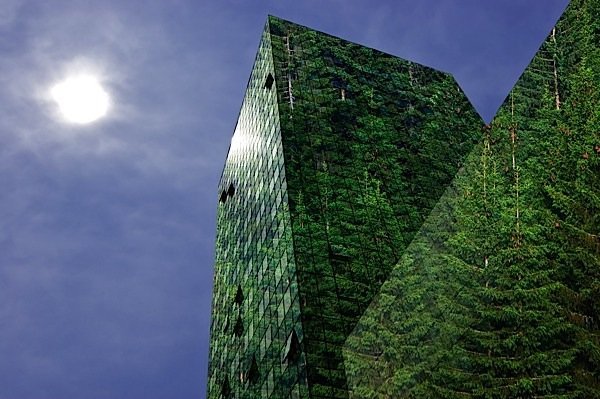
A new report from the Canada Green Building Council (CaGBC) says that the green building industry generated more economic benefits and employed more people in Canada in 2014 than oil and gas extraction, mining and forestry combined. The report estimates that nearly 300,000 full-time workers were employed in the industry, generating $23.45 billion in GDP. More than half of the jobs (55 per cent) were in construction and the building trades.
More equipment manufacturers, architects and engineers, the construction trades, property managers and investors are embracing sustainability in the building industry, CaGBC says. As evidence it cites the rapid growth in the number of LEED (Leadership in Energy and Environmental Design) certified buildings in Canada. In 2005, Canada had just thirty-one LEED-certified buildings: in 2015 there were 2,576. The economic impact of these LEED projects over their life time, assumed to be thirty-three years, will be $128 billion in gross output and $62.3 billion in GDP.

Among Canada’s strengths is its expertise in cold climate-related engineering and design, home construction and energy-efficient technologies and materials. More Canadian companies are developing advanced green building materials that are being exported, including heat exchangers and heat recovery systems, heat pumps, high-efficiency boilers, drain water heat recovery technology, geothermal and solar energy systems, high-performance windows and building envelope technologies.
With a background in cold-climate science and construction expertise, Canada’s green building industry has developed strengths in areas that include related engineering and design, quality home construction, and a range of energy-efficient / sustainable technologies and materials. Canada is recognized for its design and related professional services (engineering, architecture, planning, and community infrastructure).
However, the report warns that a lack of research and development, particularly in the construction industry, is holding it back in terms of innovation and productivity. Further, a lack of policy consistency across the country means that some jurisdictions are adopting green building faster than others. This leads to a “disincentive” for Canadian firms to compete internationally and few are doing so, the report finds. Nominal investment in R&D and innovative technology has left Canada only “slightly above” the global average in competitive positioning.
Government has a large role to play here, according to the president and CEO of CaGBC, Thomas Mueller. Governments ought to be investing more in research and development and providing financial incentives for owners and developers. He said that residential developers bear more of the costs for implementing improved energy efficiency but don’t reap the benefits. “This is an area that requires a third party such as a utility to finance energy improvements and then recoup their costs from the energy savings of the building.”
A WorldGBC report just released is similarly optimistic about the future of green building globally. Green building is expected to double by 2018, with strong growth forecast for countries like China, Brazil and India. A survey of companies in the building industry found that more than one-third (37 per cent) anticipated that most of their projects (60 per cent) would be green by 2018.






























